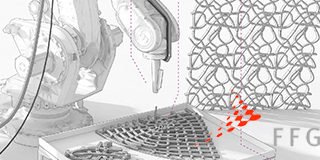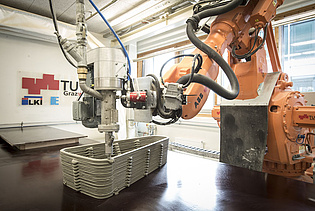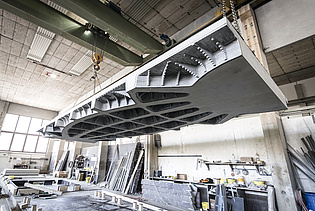COEBRO - Additive Fabrication of Concrete Elements By Robots

COEBRO // Additive Fabrication of CONCRETE ELEMENTS BY ROBOTS is a foundational research project. An interdisciplinary team of architects, civil engineers, mechanical engineers and material technologists ask scientific questions about and research the resource efficiency usage of concrete with 3D printing technology within the construction industry. Industry partners that contribute knowledge along the investigated line of production expect results as basis for the development of an industrial concrete printing system in the near future. Concrete is the most used building material in the world. Producing building elements takes a lot of effort creating forms and formwork is proportional to the costs of the material itself. 3D printing concrete could significantly reduce the amount of effort. Considering the Fields of Expertise of the TU Graz and the category Sustainable Systems the interdisciplinary team is researching the subjects Konstruktionen aus UHPC and Structural Robotics focusing on the resource efficient use of raw materials construction processes of buildings. The project objective is the investigation and the prototypically development of a complete production line for the additive fabrication of concrete elements. Considering the dependencies between the printed prototypes and the technical components a specific framework for the whole system will be analysed and defined. Prototypes will be designed respecting typical requirements of construction industry. This vice versa requires the selected application and the necessary technology. The goal is maximum flexibility within a defined quality. As orientation for the definition of quality, typical industrial-standards, like surface quality, precision and stress capacity of concrete elements are applied. At the core the technical focus of COEBRO is the prototypical development of the whole printing system including the conveyor and nozzle technology for fabricating building elements with defined attributes. After finishing the project it’s expected that within the next 3 to 5 years practical applications for the construction industry can be developed.
Find an interview about the project at the homepage of the Faculty of Architecture, TU Graz.


